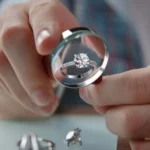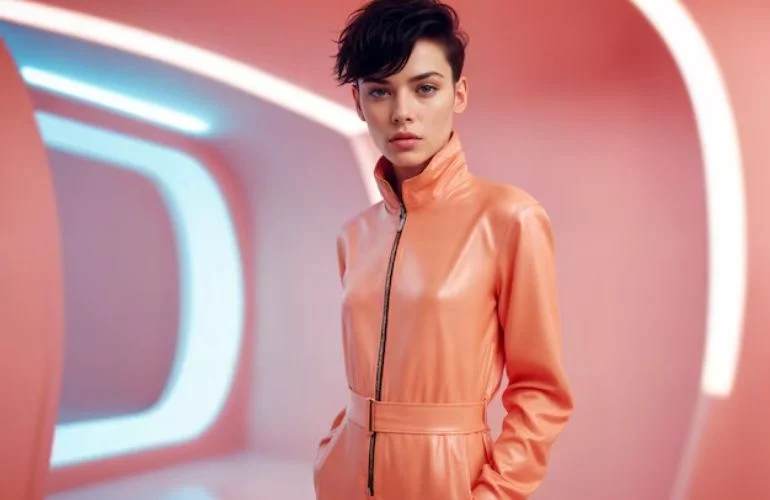Androgynous fashion has been making waves in the fashion world, breaking away from the confines of traditional gender norms and redefining what style means. But what exactly is this fashion? Simply put, it’s a style that blends masculine and feminine elements, creating a look that transcends conventional gender labels. As society becomes more inclusive, this fashion plays a crucial role in promoting individuality and self-expression.
What is Androgynous Fashion?
Androgynous fashion is a style that does not conform to the typical definitions of “men’s” or “women’s” clothing. It includes elements from both sides of the spectrum, focusing on neutral colors, minimalist designs, and versatile pieces that anyone can wear, regardless of gender. It is not just about what clothes you wear, but how you wear them.
The Evolution of Androgynous
Androgynous style is not a new concept. It has roots that date back to the early 20th century and even further in some cultures. Over time, this fashion trend has evolved, influenced by various social movements, cultural shifts, and iconic figures who have dared to challenge societal norms.
Historical Background of Androgynous
Early Instances of Androgynous Style
The history of androgynous can be traced back to various points in history where individuals chose to defy the norm. For instance, in the 1920s, women began to adopt more masculine styles, such as trousers, blazers, and short haircuts. The style symbolized liberation and resistance against traditional gender roles.
Androgyny in Different Cultures
Different cultures have embraced androgyny in their unique ways. From the flowing robes of ancient Greece, which were worn by both men and women, to Japan’s genderless fashion movements today, androgynous styles have found expression across the world.
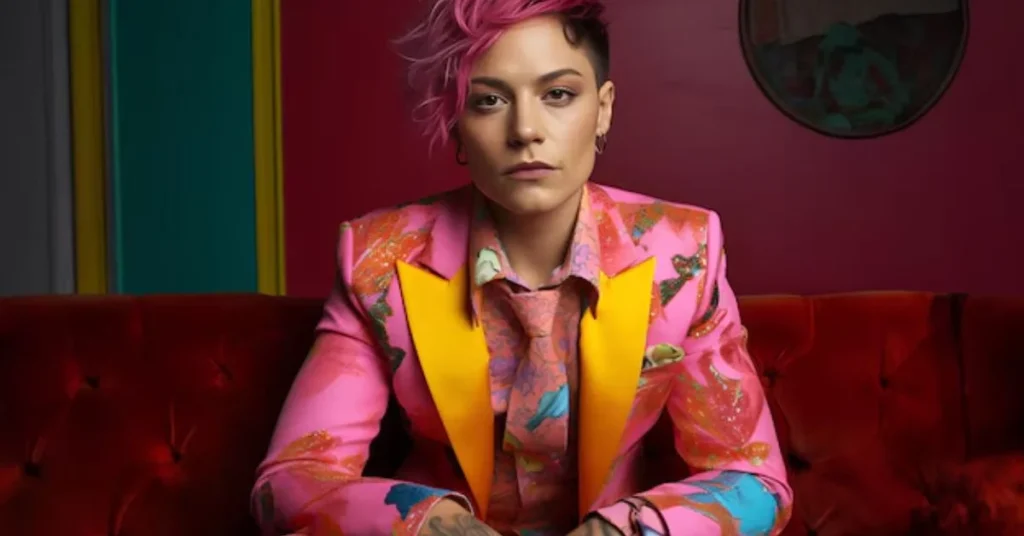
Must read In Fashion Magazine 1988 Information Society Band
The Rise of Androgynous Fashion in Modern Times
Key Moments in Androgynous History
The 1960s and 70s saw the rise of androgynous icons like David Bowie and Grace Jones, who blurred the lines between male and female aesthetics. This era marked a significant shift towards more fluid fashion choices and laid the groundwork for today’s trends.
Influential Designers and Celebrities
Many designers, like Coco Chanel and Yves Saint Laurent, pioneered gender-neutral styles that paved the way for contemporary androgynous. Celebrities such as Tilda Swinton, Janelle Monáe, and Harry Styles continue to push the envelope, making androgynous Style a powerful statement on red carpets and beyond.
Why Androgynous Fashion Matters Today
Breaking Gender Norms and Stereotypes
Androgynous is more than a trend; it’s a movement that challenges the rigid gender binary. By embracing styles that do not conform to traditional norms, people express their freedom to be themselves. This has profound implications for personal identity and self-acceptance.
Promoting Gender Fluidity and Inclusivity
Androgynous helps foster a more inclusive society by allowing individuals to dress according to their preferences rather than societal expectations. It acknowledges and celebrates the spectrum of gender identity, making space for everyone to feel comfortable in their skin.
Understanding Androgynous Style: Key Elements
Neutral Colors and Fabrics
Androgynous style often utilizes neutral colors like black, white, grey, and earth tones, which do not lean towards traditionally “masculine” or “feminine” hues. The fabrics are typically chosen for comfort and functionality, such as cotton, denim, and wool.
Functional and Minimalist Design
Minimalism is a hallmark of androgynous style, focusing on simple, clean lines, and practical cuts. This style emphasizes functionality over adornment, allowing the clothing to be versatile and timeless.
Blending Masculine and Feminine Styles
Mixing elements from both men’s and women’s fashion, like pairing a tailored suit jacket with a flowy blouse, is a common approach in androgynous style. The aim is to create a balanced look that feels unique to the individual.
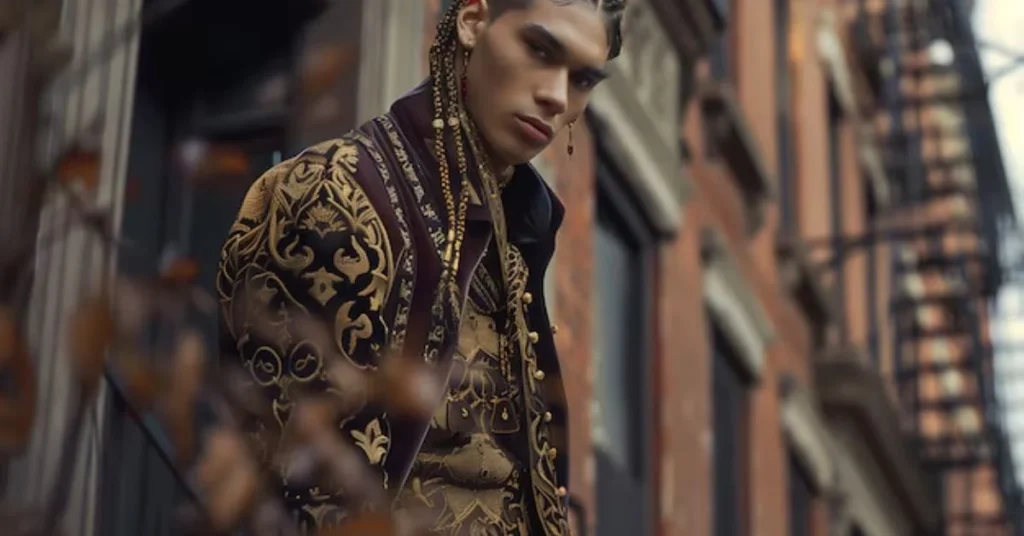
The Role of Social Media in Popularizing Androgynous Fashion
Fashion Influencers and Androgyny
Social media has played a crucial role in the rise of androgynous. Influencers and fashion bloggers showcase how they incorporate androgynous pieces into their daily lives, inspiring millions to explore gender-neutral styles.
The Power of Hashtags and Online Communities
Hashtags like #AndrogynousFashion and #GenderlessStyle have created online communities where people can share their androgynous style journeys, making it easier to find inspiration and connect with others who share similar tastes.
Androgynous Style for Different Body Types
Tips for Styling Different Body Shapes
Androgynous is inclusive and can be adapted for any body type. The key is to experiment with different fits and layers to find what feels right. For example, high-waisted pants can elongate the legs, while oversized tops can create a relaxed, non-gendered silhouette.
Accessorizing in Androgynous Style
Accessories like hats, watches, and bags can add personality to an androgynous outfit. Opt for unisex styles that blend seamlessly with the clothing to maintain the overall neutral aesthetic.
Sustainable Androgynous Style
The Intersection of Sustainability and Androgyny
Many androgynous brands are also champions of sustainability. They often use eco-friendly materials and ethical production practices, making this style choice beneficial for both the planet and your wardrobe.
Eco-Friendly Brands Leading the Way
Brands like Stella McCartney, Eileen Fisher, and Patagonia are renowned for their commitment to sustainable fashion, offering pieces that align with the principles of androgyny while being kind to the environment.
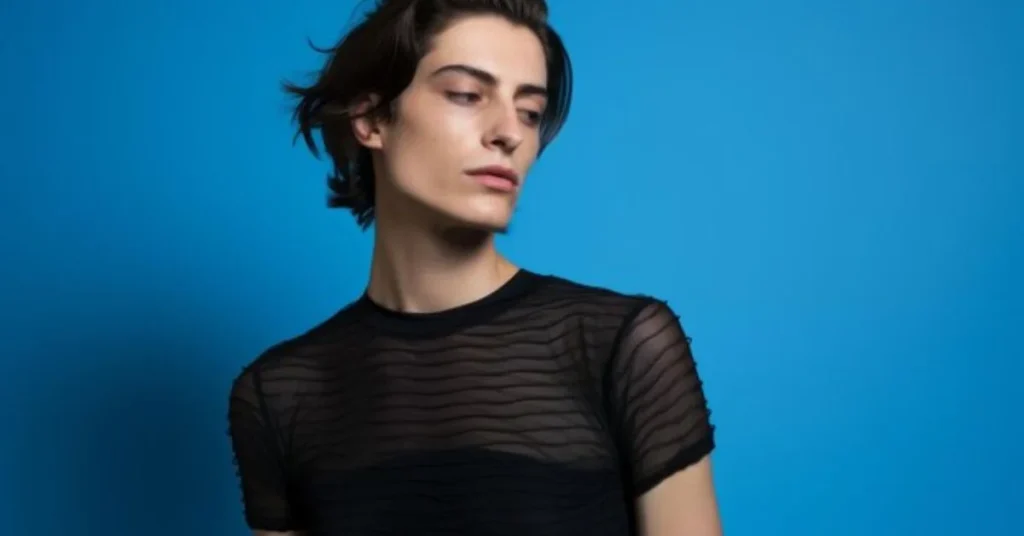
Androgynous Style in Pop Culture
Iconic Moments in Movies and Music
From Marlene Dietrich’s tuxedo in “Morocco” to Harry Styles’ groundbreaking Vogue cover, androgynous style has been a defining element in pop culture. These moments help normalize the style, making it more accessible to the mainstream audience.
The Influence of Androgyny in Art and Media
Androgyny is not just about clothing; it’s a statement that has permeated all aspects of art and media. Photographers, filmmakers, and artists often use androgynous styles to challenge societal perceptions of gender.
How to Incorporate Androgynous Style into Your Wardrobe
Basic Androgynous Pieces Everyone Should Own
Start with some staple pieces like a white button-down shirt, black tailored trousers, and a denim jacket. These basics can be mixed and matched in countless ways to create a wide variety of androgynous looks.
Styling Tips for Beginners
If you’re new to androgynous style fashion, start by blending masculine and feminine items gradually. Pair a feminine blouse with masculine trousers or vice versa. Comfort and confidence are key—wear what makes you feel your best.
Shopping Guide for Androgynous Style Fashion
Best Online Stores and Brands
Websites like ASOS, Uniqlo, and The Phluid Project offer a range of gender-neutral clothing options. They cater to different styles and budgets, making androgynous style fashion accessible to everyone.
What to Look for When Shopping
Look for versatile pieces that can be styled in multiple ways. Prioritize quality over quantity to build a sustainable, long-lasting wardrobe that fits your personal style.
Challenges
Societal Resistance and Stereotypes: Despite its growing popularity, androgynous style still faces resistance from some parts of society. Traditional gender norms are deeply ingrained, making it a challenge for some to accept or understand this style.
Overcoming Fashion Industry Limitations: The fashion industry itself can be slow to adapt. However, more brands are starting to embrace androgynous styles, and consumer demand is pushing for broader acceptance and availability.
The Future of Androgynous Style Fashion
Expect to see more experimentation with textures, patterns, and colors. As the line between menswear and womenswear continues to blur, fashion is likely to become even more inclusive and dynamic.
Androgynous style fashion will likely become a staple rather than a trend, with more mainstream brands offering gender-neutral collections. The movement towards sustainability will also continue to grow alongside it.
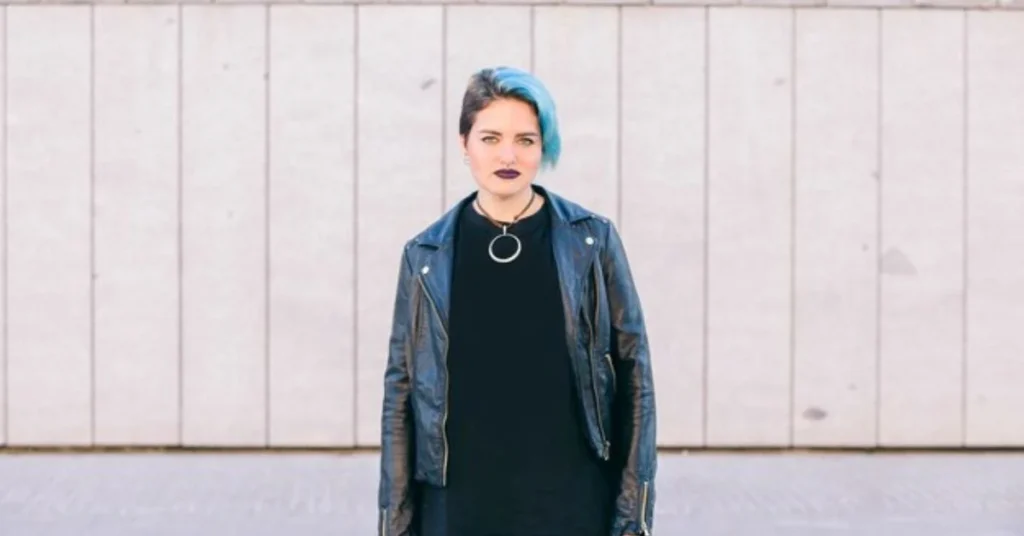
Conclusion
Androgynous fashion is more than a trend; it’s a celebration of individuality and freedom. It’s about embracing who you are, regardless of gender norms. As this style continues to gain momentum, it brings with it the promise of a more inclusive, accepting world. So why not give it a try and redefine your style today? If you want to read more information then check out this site.
What is the difference between unisex and androgynous fashion?
Unisex fashion is designed to be worn by any gender, often with a focus on universal fits and sizes, whereas androgynous mixes elements of both masculine and feminine styles, allowing for more personal expression.
Can androgynous be formal?
Absolutely! Androgynous can be formal, such as wearing a tailored suit or a minimalist dress. The key is to balance elements from both masculine and feminine styles.
How do I start experimenting with androgynous fashion?
Start by incorporating a few neutral pieces into your wardrobe, like a classic white shirt or a pair of tailored trousers. Mix and match to find combinations that feel right for you.
What are some affordable brands for androgynous clothing?
Brands like Uniqlo, ASOS, and H&M offer affordable androgynous clothing options that cater to various styles and preferences.
Is androgynous style suitable for all age groups?
Yes, androgynous is versatile and can be adapted to suit any age group. It’s all about finding pieces that match your style and comfort level.





